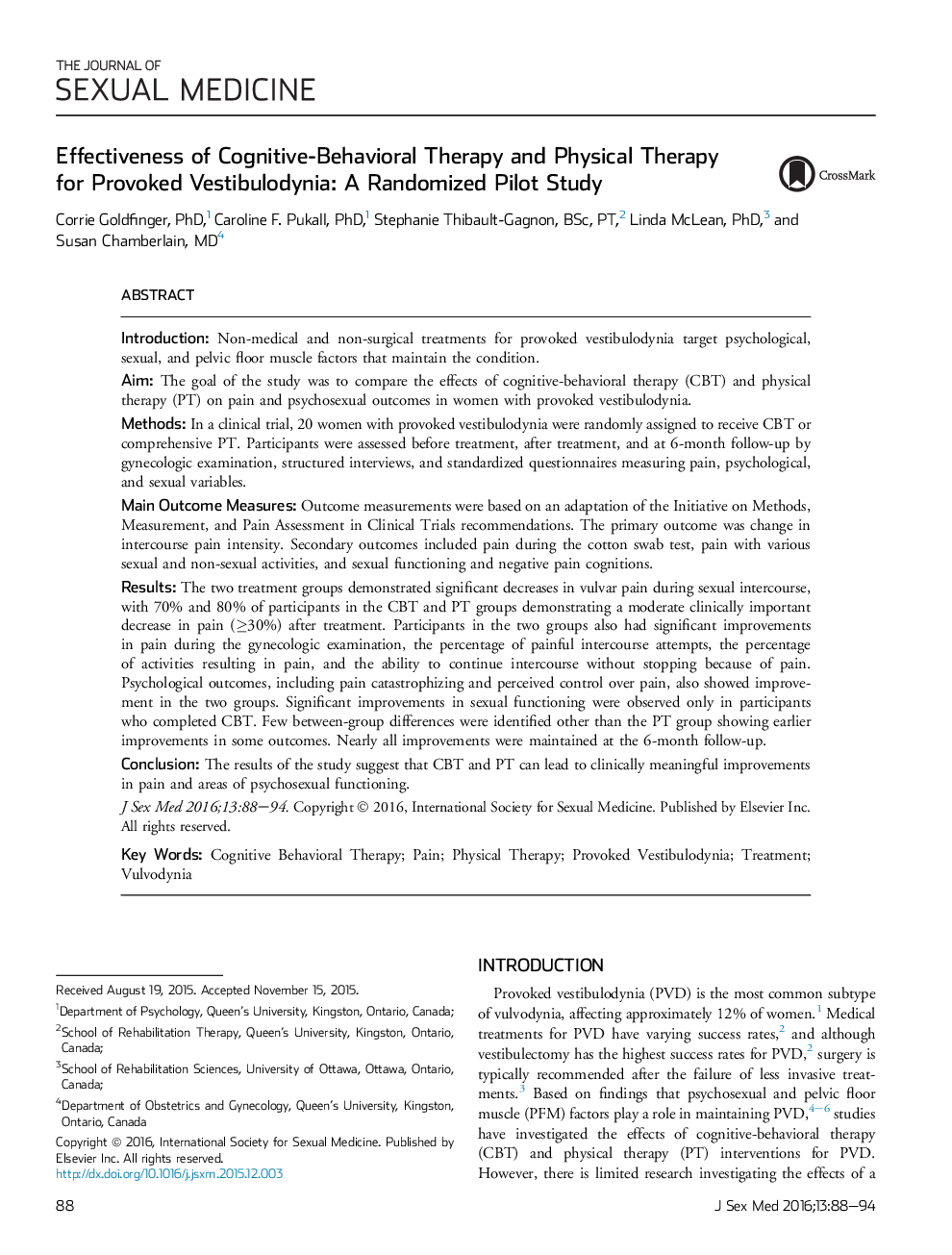| کد مقاله | کد نشریه | سال انتشار | مقاله انگلیسی | نسخه تمام متن |
|---|---|---|---|---|
| 4269481 | 1610839 | 2016 | 7 صفحه PDF | دانلود رایگان |
IntroductionNon-medical and non-surgical treatments for provoked vestibulodynia target psychological, sexual, and pelvic floor muscle factors that maintain the condition.AimThe goal of the study was to compare the effects of cognitive-behavioral therapy (CBT) and physical therapy (PT) on pain and psychosexual outcomes in women with provoked vestibulodynia.MethodsIn a clinical trial, 20 women with provoked vestibulodynia were randomly assigned to receive CBT or comprehensive PT. Participants were assessed before treatment, after treatment, and at 6-month follow-up by gynecologic examination, structured interviews, and standardized questionnaires measuring pain, psychological, and sexual variables.Main Outcome MeasuresOutcome measurements were based on an adaptation of the Initiative on Methods, Measurement, and Pain Assessment in Clinical Trials recommendations. The primary outcome was change in intercourse pain intensity. Secondary outcomes included pain during the cotton swab test, pain with various sexual and non-sexual activities, and sexual functioning and negative pain cognitions.ResultsThe two treatment groups demonstrated significant decreases in vulvar pain during sexual intercourse, with 70% and 80% of participants in the CBT and PT groups demonstrating a moderate clinically important decrease in pain (≥30%) after treatment. Participants in the two groups also had significant improvements in pain during the gynecologic examination, the percentage of painful intercourse attempts, the percentage of activities resulting in pain, and the ability to continue intercourse without stopping because of pain. Psychological outcomes, including pain catastrophizing and perceived control over pain, also showed improvement in the two groups. Significant improvements in sexual functioning were observed only in participants who completed CBT. Few between-group differences were identified other than the PT group showing earlier improvements in some outcomes. Nearly all improvements were maintained at the 6-month follow-up.ConclusionThe results of the study suggest that CBT and PT can lead to clinically meaningful improvements in pain and areas of psychosexual functioning.
Journal: The Journal of Sexual Medicine - Volume 13, Issue 1, January 2016, Pages 88–94
